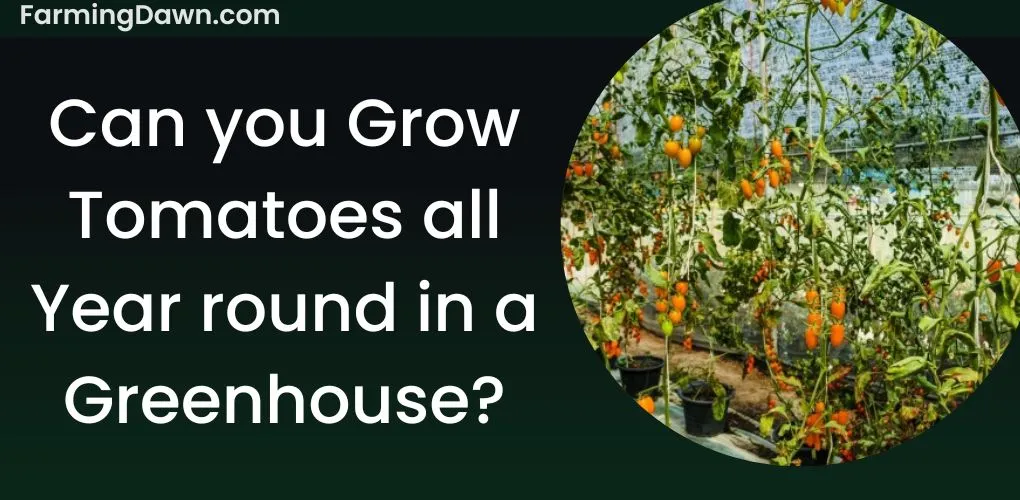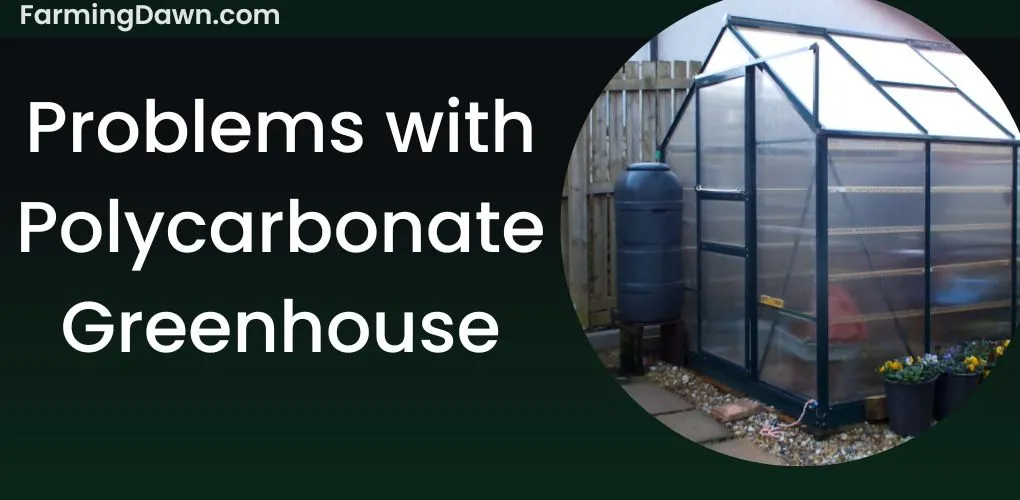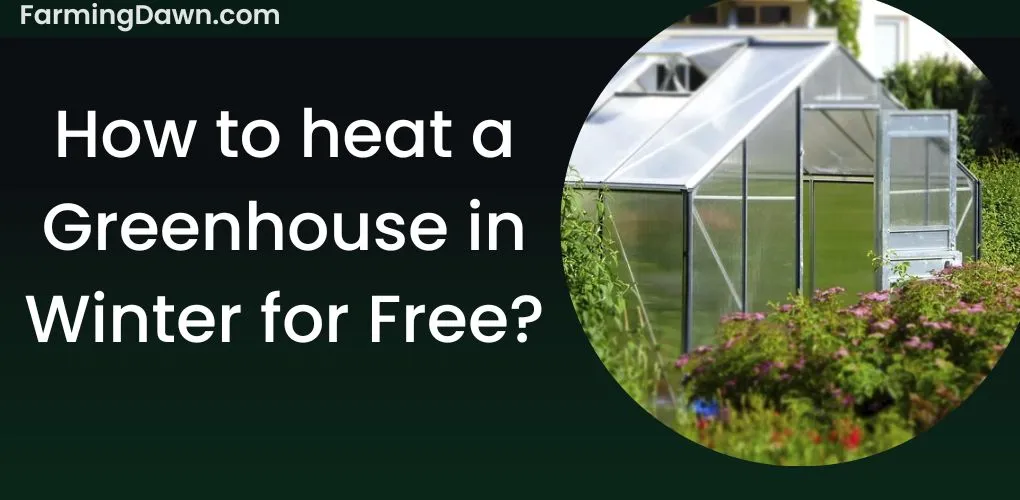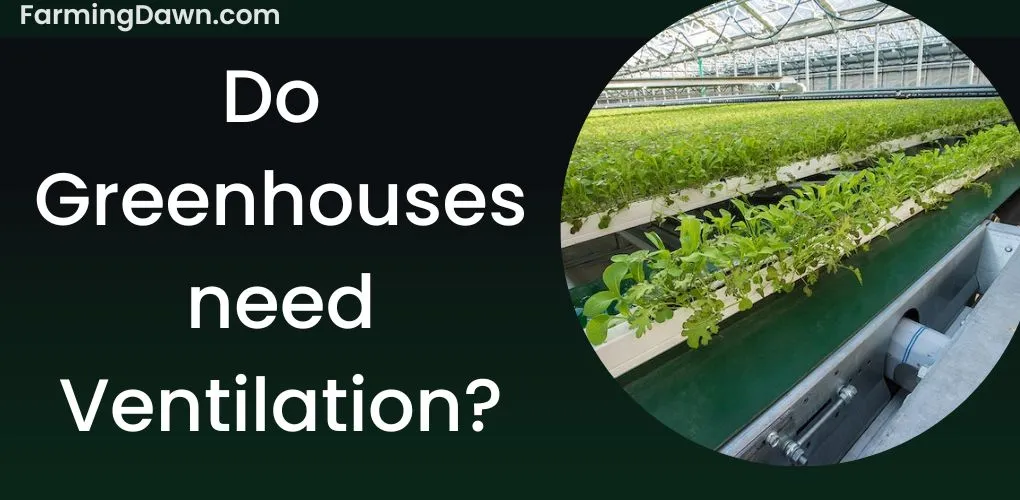A greenhouse might be a good investment to grow your food and have some space in your backyard. You may grow various crops year-round, including fruits, vegetables, and herbs, with the correct setup.
Now, you may wonder, “can you grow tomatoes year round in a greenhouse?” The answer is unquestionable yes! In fact, one of the most popularly growing crops in greenhouses is tomatoes. They can yield a bumper crop all year long and thrive in the warm, humid climate of a greenhouse.
Before getting into the mechanics of growing tomatoes in a greenhouse, let’s first discuss the importance of year-round gardening. Many people are seeking ways to become more self-sufficient and save money on groceries as the price of fresh produce continues to rise.
You can lessen your dependency on grocery stores and reap the many advantages of fresh produce by growing your own food all year long.
Also, growing vegetables in a greenhouse are sustainable and environmentally good practice. You can reduce water wastage and avoid dangerous pesticides by managing the environment in which your plants thrive.
For individuals who genuinely value the environment and want to contribute to its preservation, greenhouse gardening is a fantastic option.
Today l will be discussing everything you need to know about growing tomatoes in a greenhouse, including the best types to pick, how to plant and care for your tomatoes, and how to solve frequent issues.
How can you grow tomatoes year round in a greenhouse?
As someone who’s been farming and homesteading for decades, I can tell you the best method for growing tomatoes in the greenhouse all year round. However, like with any agricultural endeavor, there are certainly significant factors you’ll need to keep in mind if you want to be successful.
Key Factors for Successful Year-round Tomato Cultivation in a Greenhouse
The right amount of direct sunlight is essential for tomato growth, but too much can cause heat stress and sunburn, also known as sunscald. The effects of excessive sun exposure include your tomato plant leaves turning white and curling.
To control how much light your plants receive, think about installing shade cloth or blinds. To make sure your plants get the necessary 12–16 hours of light each day during the darker winter months, you might also want to use supplemental lighting.
Minimum temperature for tomatoes in greenhouse
To grow healthy tomato plants, you must maintain the proper temperatures and humidity levels. The ideal temperature range for tomatoes is 65–80°F (18–26°C), with a humidity of 60–70%. You can achieve these ideal conditions by using a greenhouse with good ventilation, adequate insulation, and heating and cooling systems.
Staking
Staking is an essential method for greenhouse tomato growth all year round. Staking essentially means to string tomatoes in greenhouse. By staking tomatoes, you provide your tomato plants structure and support, keeping them from bowing or breaking under the weight of their fruit.
In addition to ensuring fruitful growth and development, this also makes harvesting simpler and more effective. Also, staking encourages appropriate air circulation around the plants, which lowers the danger of fungi illnesses. Staked plants also get more sunshine, which improves photosynthesis and improves general health.
Watering and fertilizing
For healthy tomato plants, appropriate watering and fertilizing are essential. Water your plants frequently, but keep an eye out for under or overwatering. Consistent moisture levels can be helped with a drip irrigation system. When fertilizing your plants, use a fertilizer that has an equal amount of nitrogen, phosphorus, and potassium. For a more sustainable crop, you might also want to think about using organic compost or natural fertilizers.
Pest and disease control
Controlling pests and diseases is one of the most difficult aspects of growing tomatoes in greenhouses. Regular inspection and quick action are key to preventing infestations. To reduce the use of chemical pesticides, think about implementing integrated pest management (IPM) strategies like biological control techniques and cultural practices like crop rotation.
Varietal selection
Finally, selecting the best tomato variety is crucial for success all year long. Choose disease-resistant cultivars that have high yield potential and are suitable for cultivation in greenhouses. Beefsteak, Cherry, Roma, and Heirloom tomatoes are among the most widely grown greenhouse varieties.
Tips for Growing Tomatoes Year Round in a Greenhouse
Choosing the right greenhouse size and location is the first step toward successful tomato growth. The number of tomato plants you wish to grow will determine the size of your greenhouse. For a family of four, a 6×8-foot greenhouse works best for growing tomatoes.
Another important factor is the greenhouse’s location. You must locate your greenhouse to get daily sunshine exposure of at least six hours. You should also consider the prevalent wind direction to avoid exposing the greenhouse to strong winds.
Install Required Hardware
Installing the essential machinery comes after selecting the ideal greenhouse size and location. In the winter, you’ll need a heating system to maintain a temperature over 50 degrees Fahrenheit, a ventilation system to reduce humidity and encourage airflow, and a lighting system to supplement the short winter days with artificial light.
Use Proper Growing Mediums and Containers
The next step is to choose the right growing medium and containers. Organically rich, well-draining soil is ideal for growing tomatoes. To make the appropriate growing medium, combine peat moss, vermiculite, and perlite. Moreover, you can grow your tomato plants in containers like hanging baskets, grow bags, or plastic pots.
Provide Sufficient Support and Pruning
Tomato plants tend to grow very tall. Therefore, they require sufficient support to keep them from falling over. Stakes, cages, or trellises can all be used as supports. Also, you must frequently prune your tomato plants to improve ventilation, lower the risk of disease, and boost harvests.
Regular Inspection and Upkeep
Lastly, successful tomato cultivation depends on frequent maintenance and observation. You must regularly monitor and adjust the temperature, humidity, and light levels. You should fertilize your tomato plants every two-three weeks and water them frequently.
When to plant in greenhouse for year-round growth?
The best time to plant tomatoes is during the warmer seasons since they need warmth and sunlight to flourish. However, a greenhouse’s controlled atmosphere allows you to extend your growing season and take advantage of delicious tomatoes all year round.
To begin, sow your tomato seeds in the early spring, either March or April, depending on where you live. This will allow ample time for your plants to grow and mature before the fall and winter months bring cooler weather. Remember that temperatures in greenhouses can change, so it’s crucial to monitor them and make adjustments as necessary.
Make sure your greenhouse has enough lighting and ventilation to support healthy growth. During the shorter winter months, you can use artificial illumination to complement natural sunlight. Additionally, proper watering and fertilization are crucial for tomato plants to thrive in a greenhouse environment.
Growing tomatoes in a greenhouse in winter
Selecting a suitable tomato variety is the first step to growing greenhouse tomatoes in winter. Look for cultivars like “Tumbler,” “Montello,” or “Sun Gold” to grow plants in a greenhouse. Some varieties are more compact and may thrive in the greenhouse’s climate-controlled environment.
The next step is to get the soil ready. Use a high-quality, nutrient-rich, well-draining potting mix. To enhance the soil’s richness and stability, add compost or well-rotted manure.
To ensure appropriate air circulation, position your tomato plants at a spacing of at least two feet apart. This will promote healthy growth and aid in disease prevention. You might also want to consider using stakes or trellises to support your plants as they grow.
When it comes to growing tomatoes in a greenhouse in winter, watering is vital. Tomato development needs consistent hydration, but avoid overwatering to prevent root rot. The top inch of soil should be irrigated when it feels dry to the touch, as a general rule.
In addition to giving your tomatoes the right amount of water, you should offer them enough light. Although natural sunlight may be in short supply throughout the winter, consider using grow lights as a compliment. Minimum 12-14 daily light hours are required for the optimum growth.
Greenhouse FAQs
Can you grow in a greenhouse during the off-season?
In a greenhouse, it is feasible to grow plants out of season by regulating the temperature, humidity, and lighting. Crops can be grown outside of their natural growing season in a greenhouse because it offers a controlled environment.
How much longer does the growing season last in a greenhouse?
The type of greenhouse, the location, and the particular crops being cultivated all play a role in how long the growing season is extended by a greenhouse. A greenhouse may, however, generally extend the growing season by several months or perhaps all year long.
Do tomatoes grow year round in greenhouse?
Sure, By employing methods like heating and cooling systems, lighting systems, and climate control technology, it is possible to have greenhouse tomatoes all year round. An ideal year-round microclimate can be produced in a well-designed greenhouse.
In the summer, is it possible to cultivate vegetables in a greenhouse?
Vegetables can be grown in a greenhouse during the summer, yes. To avoid causing heat stress to the plants, it is crucial to regulate the temperature and humidity. To control the temperature within the greenhouse, ventilation and shade devices may also be required.
Can you grow veggies in a greenhouse during the winter?
Using strategies like insulation, heating systems, and lighting systems, it is possible to grow vegetables in a greenhouse throughout the winter. Nonetheless, it could be important to select crops that do better in cooler climates and with less light.
Can you grow tomatoes year round in a greenhouse? Final Thoughts
After reading this complete article, can you grow tomatoes year-round in a greenhouse? Now, I guess your answer would be yes. With proper planning, preparation, and care, you can create a thriving greenhouse environment that produces healthy and delicious tomatoes throughout the year. So why not give it a shot and see what you can learn from it? If you are interested in growing some other kinds consider growing black Cherokee tomatoes.





